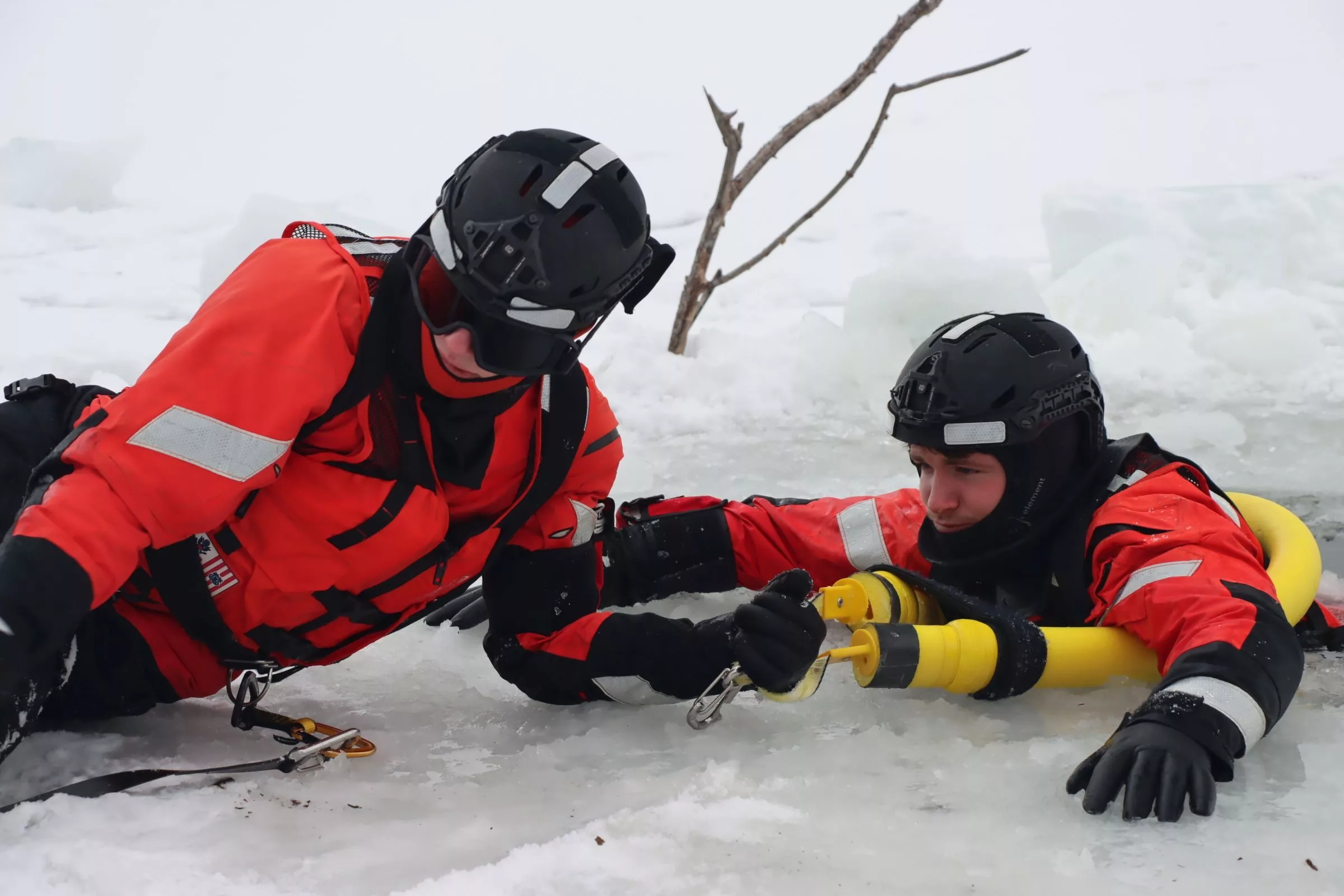
The Coast Guard urges the public to exercise caution around icy waters as temperatures fluctuate across the Great Lakes region.
Temperature fluctuations have impacts on the structural integrity of the ice and could pose safety concerns for those planning to recreate on or near ice and cold water.
Warmer air temperatures will cause frozen waters to melt at an alarming rate and may cause misperceptions about Great Lakes water temperatures, which will remain dangerously cold, posing safety concerns for anyone venturing onto the lakes. Ice is unpredictable and the thickness can vary, even in small areas. Warm temperatures and currents, particularly around narrow spots, bridges, inlets and outlets, are always suspect for thin ice.
Stay away from cracks, seams, pressure ridges, slushy areas and darker areas since these signify thinner ice. In addition, ice near shore of a frozen lake may be unsafe and weaker because of shifting, expansion, wind and sunlight reflecting from the bottom.
Before you head out onto the ice or onto the water, make sure you take the necessary precautions that could save your life:
• Always wear a Coast Guard-approved life jacket. A life jacket allows a person to float with a minimum of energy expended and allows the person to assume the Heat Escape Lessening Position by bringing the knees close to the chest and holding them in place by wrapping the arms around the shin portions of the legs.
• Dress for the water temperature not the air temperature. Don’t let warm temperatures deceive you. Wear a dry suit in any cold-water environment to increase the chance of surviving a fall into the water.
• Hypothermia is the biggest danger after falling into the water, even if one manages to get out immediately. Every minute counts in a cold water environment. Hypothermia sets in quickly as the human body’s core temperature drops below 95 degrees (35 degrees C). Cold water drains a body’s heat up to 25 times faster than cold air.
• Dress in bright colors, wear reflective clothing, patches, or tape, and wear an exposure suit that is waterproof. The chance of locating a person in distress is increased when the individual wears bright and reflective clothing.
• Never go out on the water alone; always use the buddy system. File a float plan to let a friend or relative know where you’re going and how long you expect to be gone.
• Carry a registered personal locator beacon in addition to a marine radio to alert the Coast Guard and local safety agencies of potential distress. Consider a waterproof hand-held model that can be worn. Bring ice awls or screw drivers in case you need to self-rescue.








